Purple Rediscovered
Purple was long reserved for the rich and powerful. The precious colour is extracted with great effort from sea snails. The first references to purple dyeing can be found as early as the 16th century BC. Purple-coloured fabrics are mentioned in many places in antiquity and their special beauty and radiance is repeatedly emphasised. With the end of the Byzantine Empire, the purple dye disappeared in the 14th century AD. Only large piles of snail shells remained in some places as a memory of its extraction. Several thousand snails were needed to produce one gram of purple. The knowledge of how to obtain real purple was lost. Lice provided a similar colour and chemistry created a synthetic substitute.
Purple is the colour that comes from the sea. But there is not just one purple snail. In our films we show two species of sea snails: ‘Purpura Pansa’ from the Pacific coast of Mexico and ‘Hexaplex Trunculus’ from the Mediterranean in southern France.
In 2004, with the support of Marta Turok, we were able to film in Mexico how a small indigenous group of Mixtecs extract the purple dye from the ‘Purpura Pansa’. In a second film, we introduce the German artist Inge Boesken Kanold, living in the south of France, who has spent more than 40 years researching and trying out how she can create a purple dyeing vat and produce a pigment for painting. The film was shot in her atelier in 2023.
The Films
Purple of the Mixtecs
Purple is dyed on the rocks on the Pacific coast in Mexico, directly on site. The colour is developing in the air and under the strong sun without any other additives. Only a few Mixtecs are authorised to do this. The purple snails stick to the rocks and the dyers can only find them if the rocks are not covered by high surf. The snails actually produce the secretion suitable for dyeing to defend themselves against attackers. But the humans trick them. Using a flat stick, they detach the snails from the rocks, provoke them and milk out the colouring secretion. To dye a 100 gram strand of cotton, 50 snails have to provide their juice. They are then returned to the rocks and given a month to produce new dye. Since 1994, the purple snail has been considered an endangered species in Mexico and only the small group of Mixtecs from Pinotepa, located in the inland, are allowed to dye. The women there use the wool to weave wrap skirts. Purple is traditionally of great importance to them.
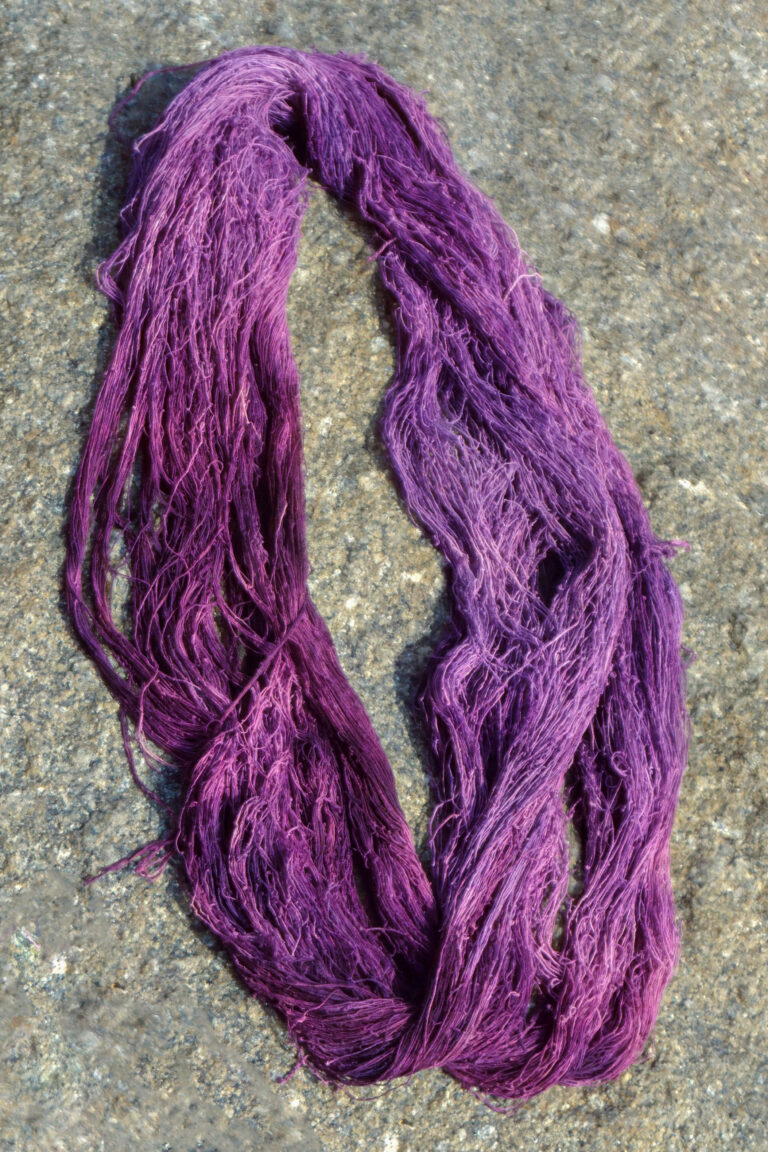
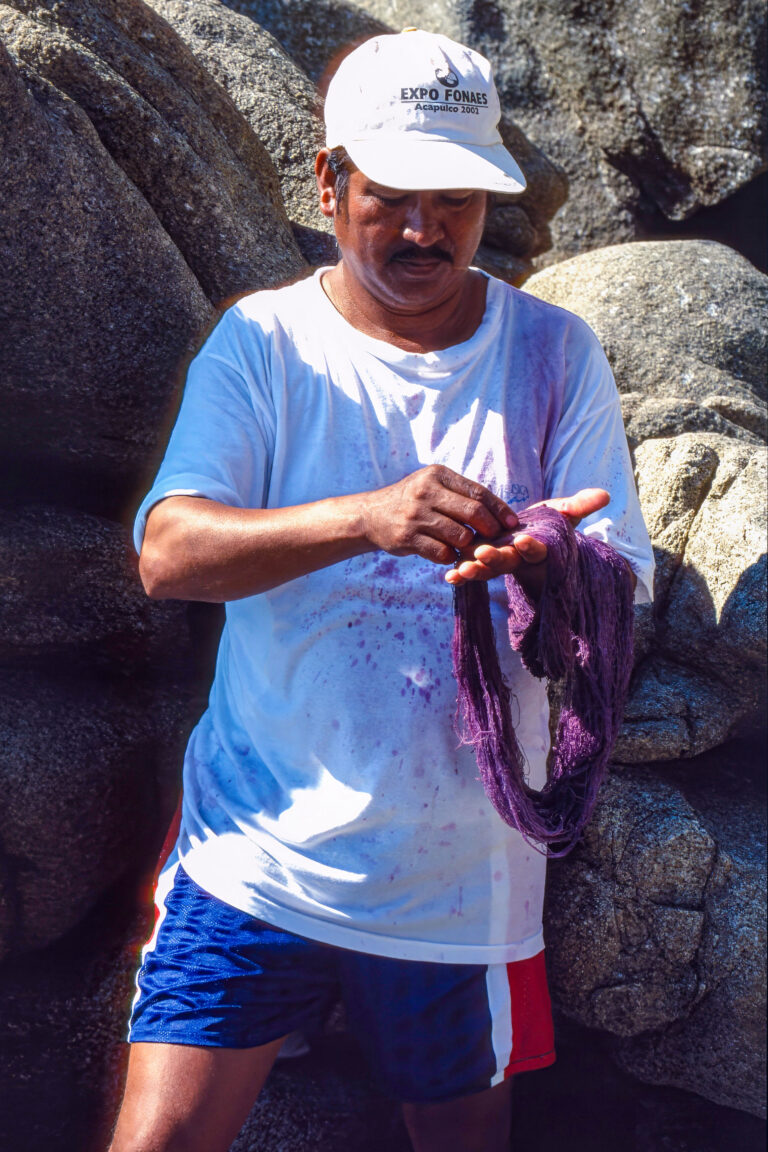
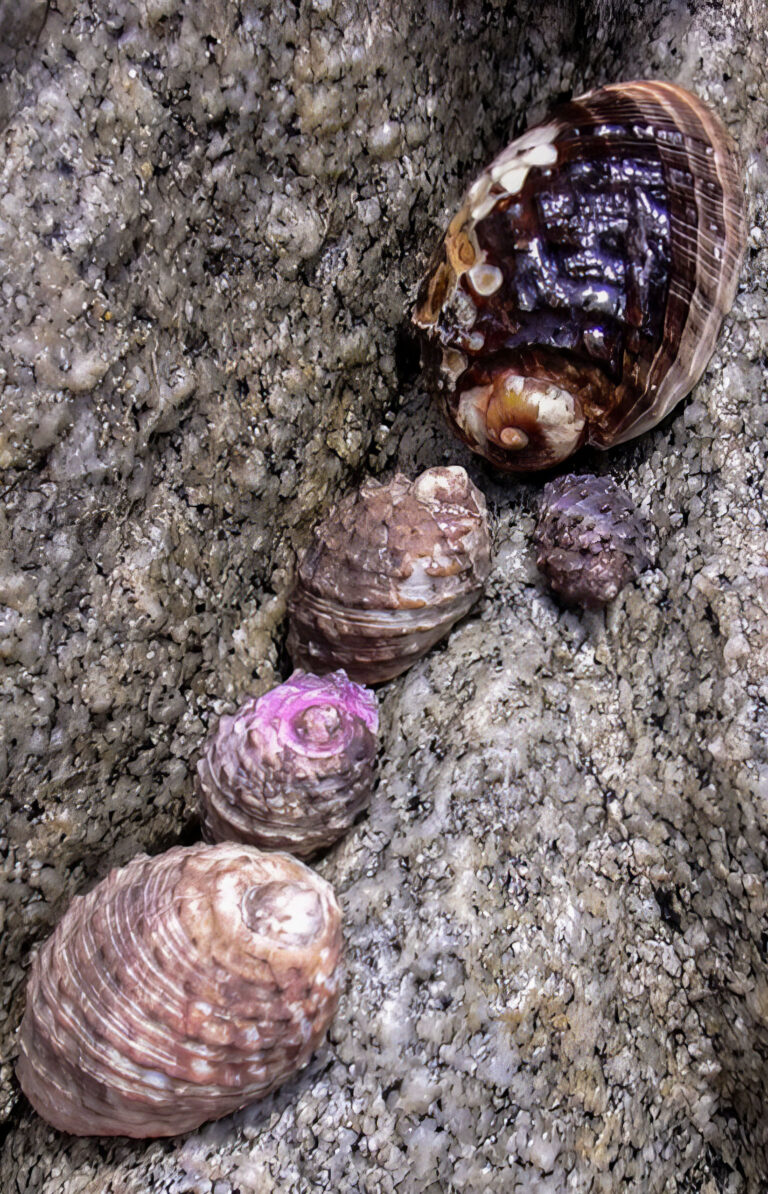
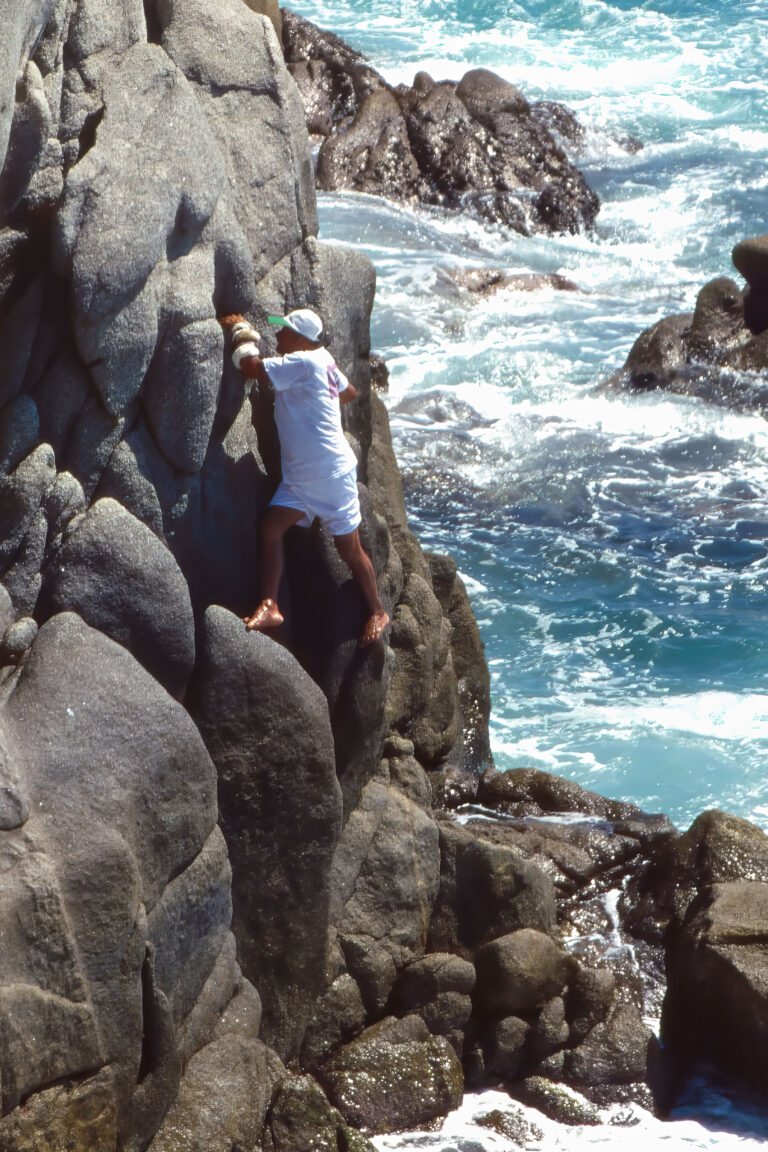
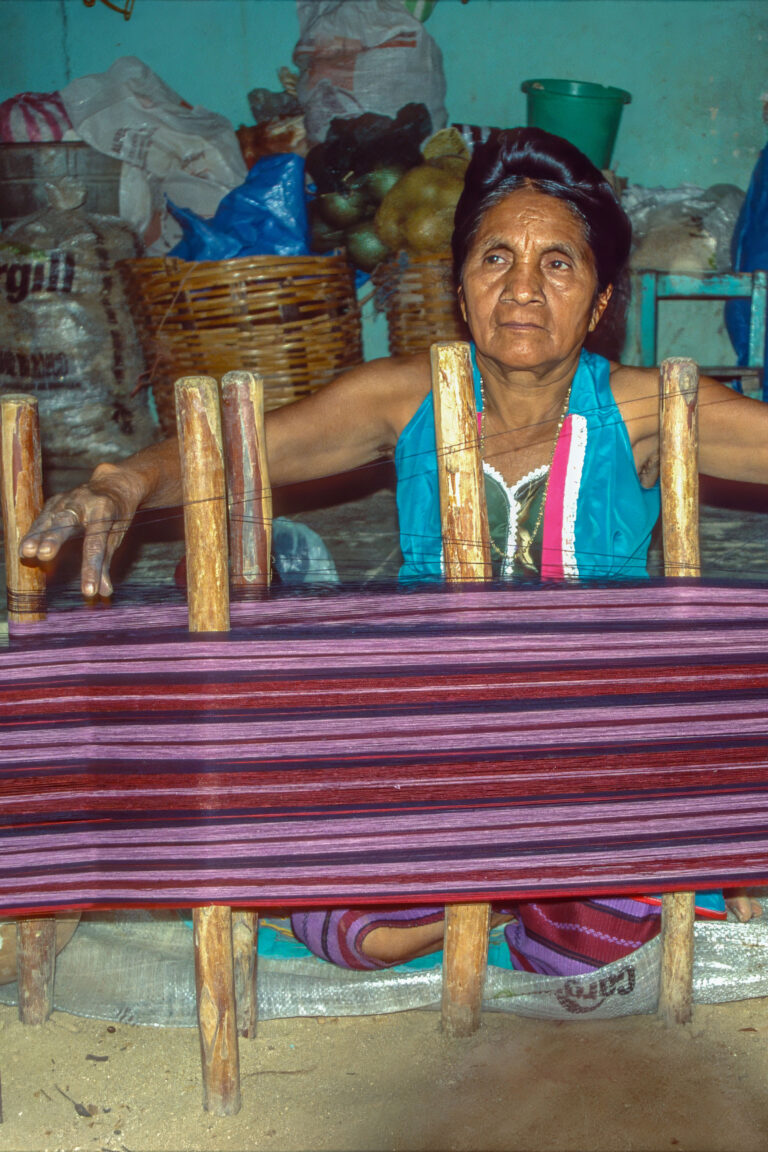
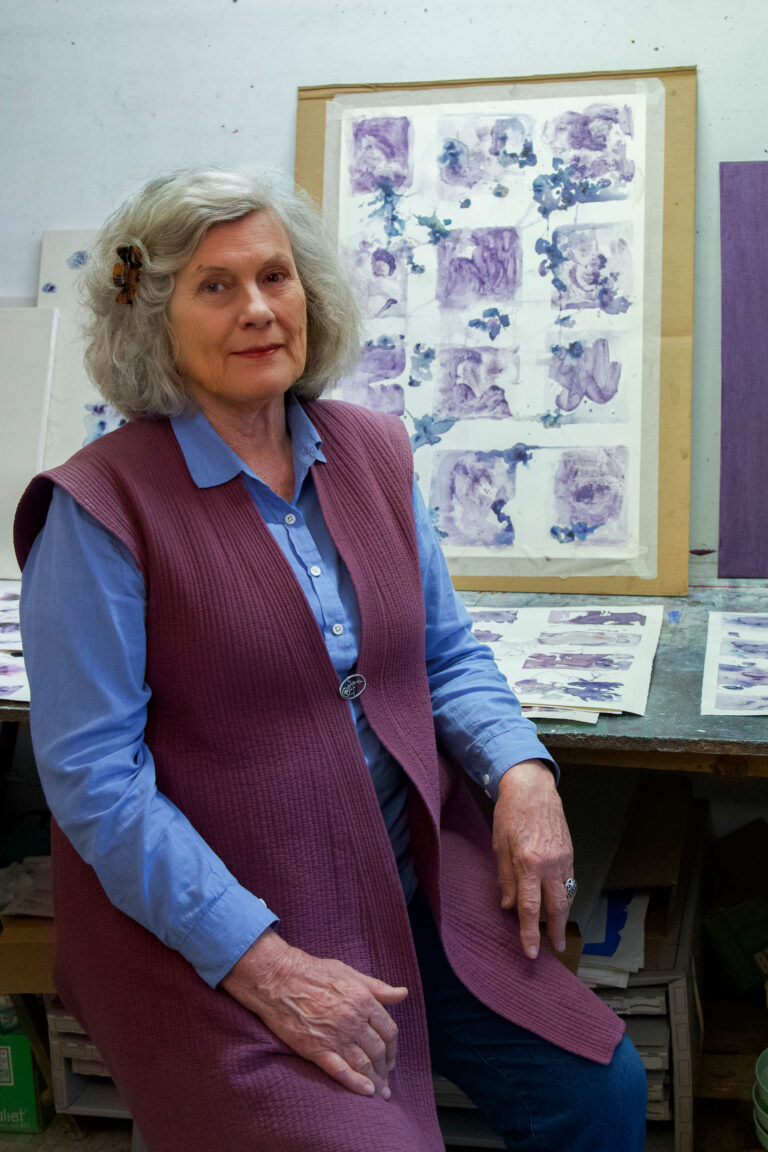
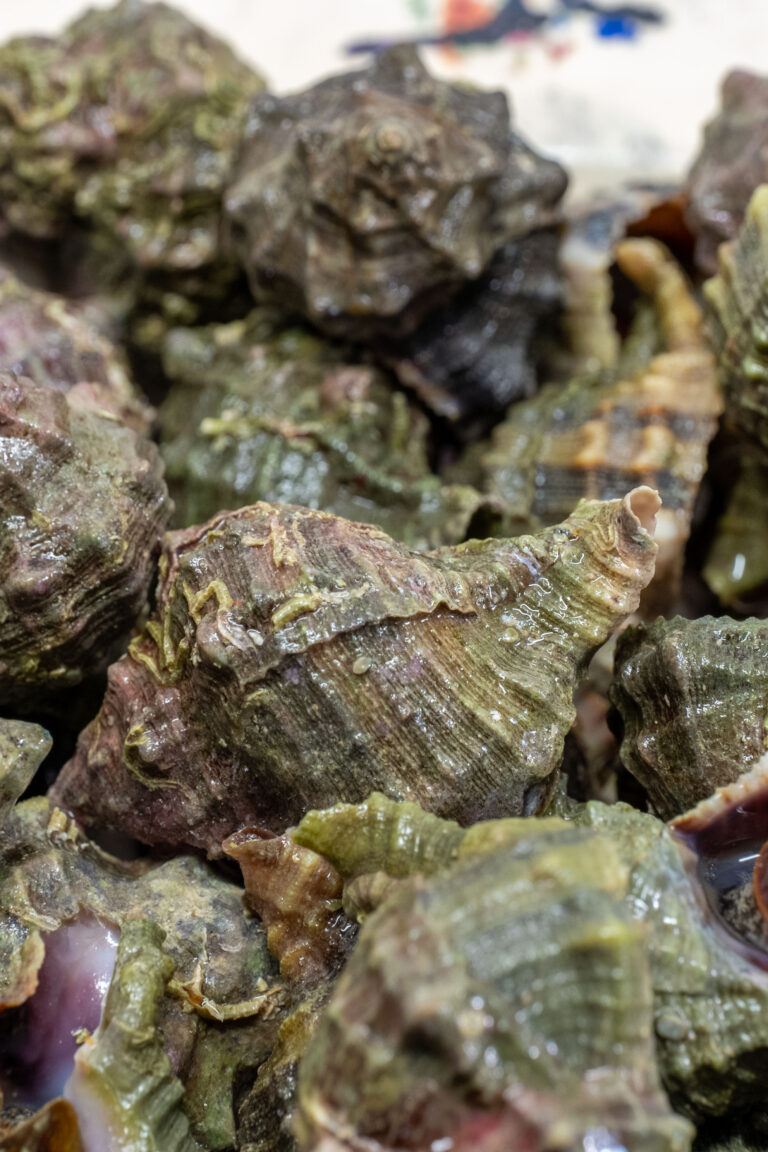
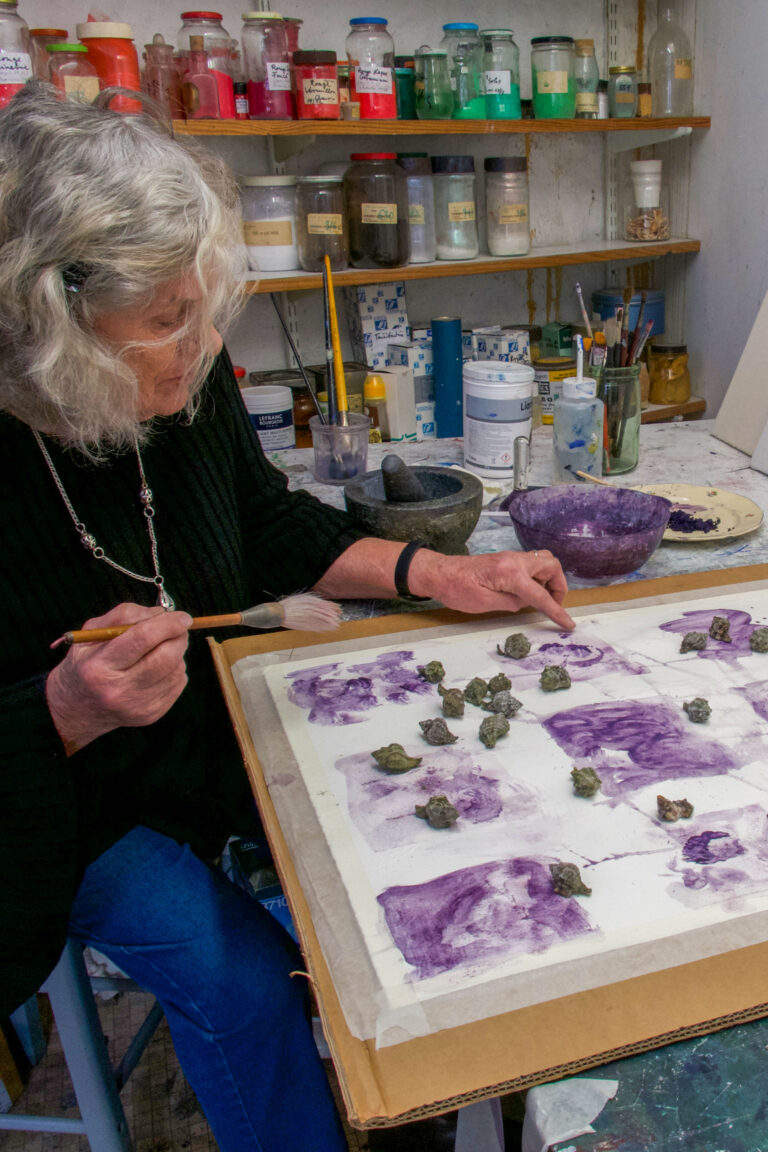
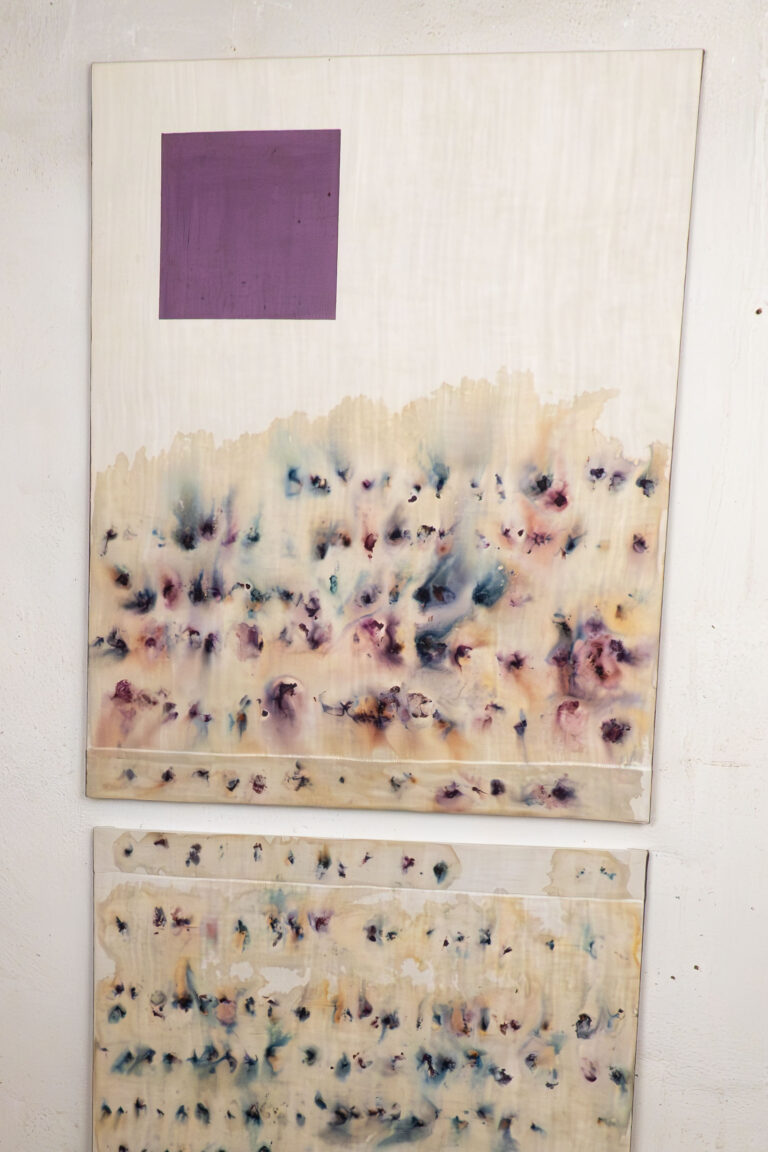
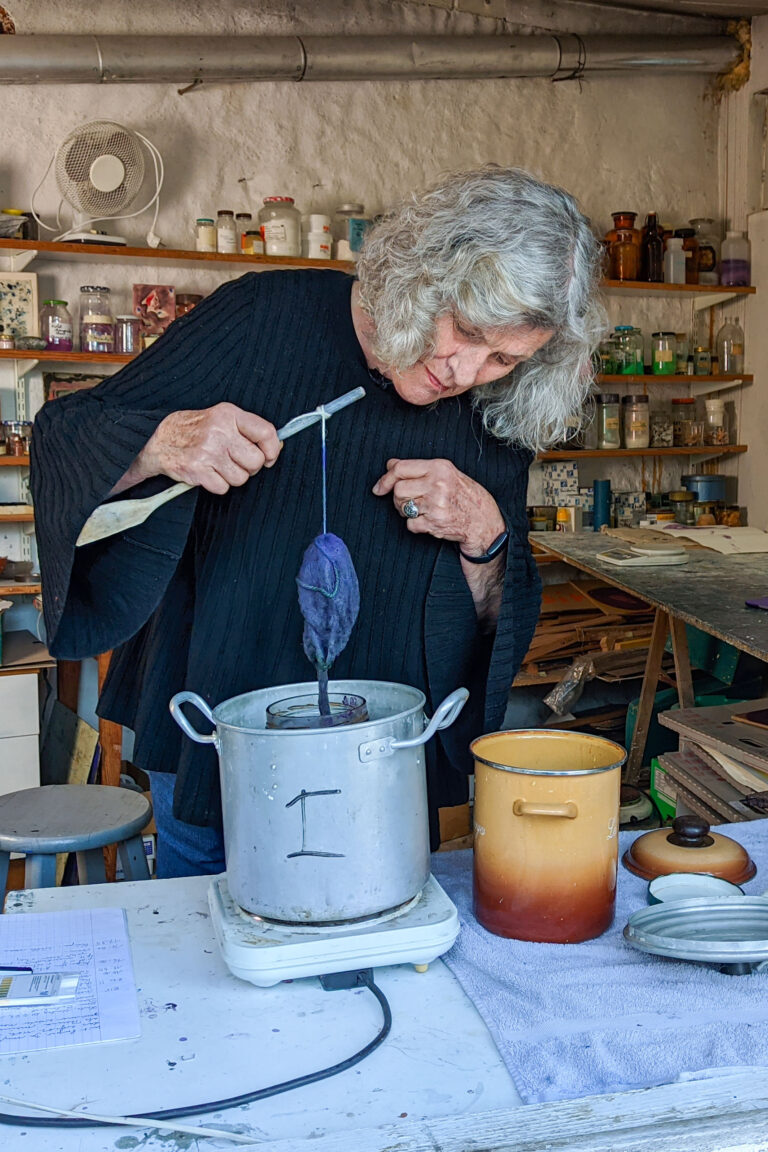
Purpurissum
After a long journey, Inge Boesken Kanold is able to recreate a purple pigment for painting. She has spent almost her entire life working with purple. She buys the snails locally at the farmers’ market. They are considered a delicacy in the Provence (France). In the beginning, she placed the snails directly on the canvas and let the colouring secretion run out. The resulting colour patches were the basis for her artistic work. Today she paints with her self-made pigment, which she calls ‘Purpurissum’, like Pliny the Elder in the 1st century A.D. But first she had to find out how to prepare a dyeing vat using old recipes. The colourant is found in the hypobranchial gland of the snail. Inge Boesken Kanold cuts it out and then prepares a vat in which the colour is initially water-soluble and green. The material to be dyed remains in it for around 30 minutes, but only when it comes into contact with light the colour develops from green to blue to red-violet. Purple is not a colour tone, but a colour spectrum between blue and red.
The films are 16 and 34 minutes long. There is a German and an English version. Each film stands for itself, they can be watched individually, but it is best to watch them one after the other, as they complement each other very well.
There is a DVD and a BluRay available on which both films can be seen. They can be ordered directly from this website for private use. However, the films can now also be watched online in high quality as video on demand. You will find the link below.
For public screenings and events, in cinemas or other venues, we will be able to lend you a professional DCP or BluRay. Enquiries to: order@bt-medienproduktion.de
Supported by:

